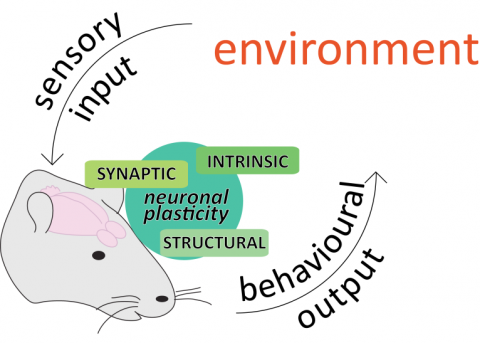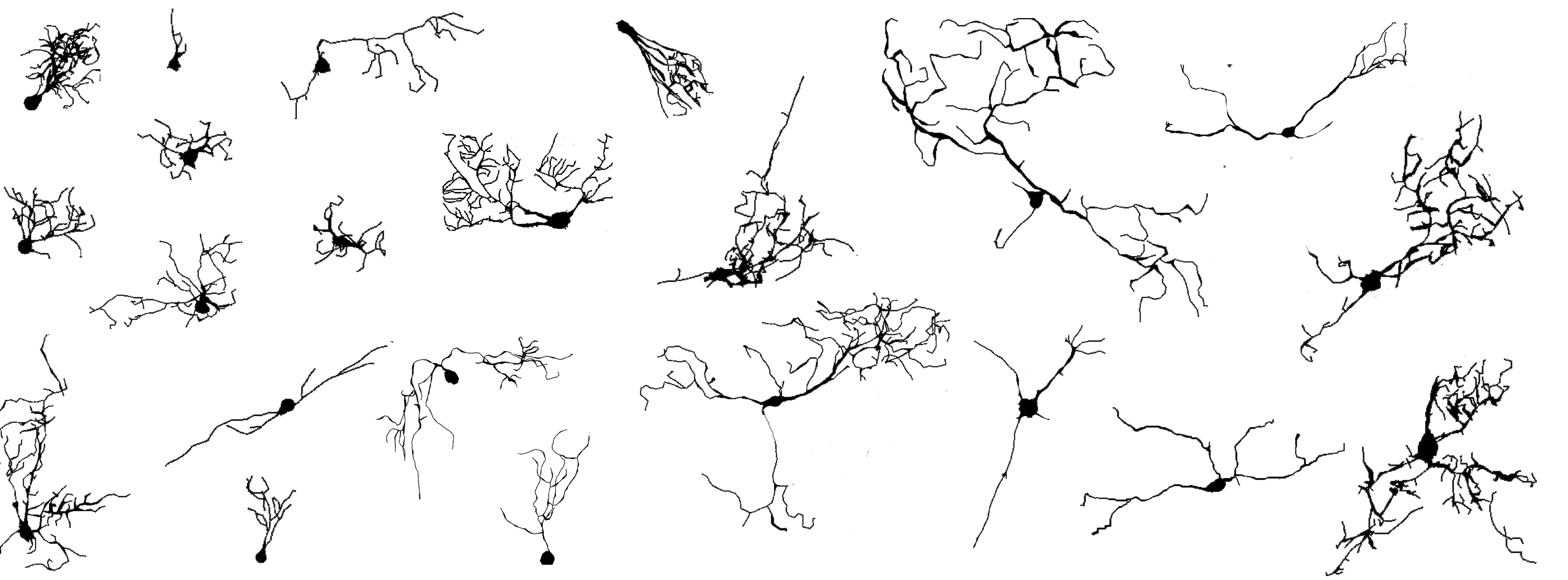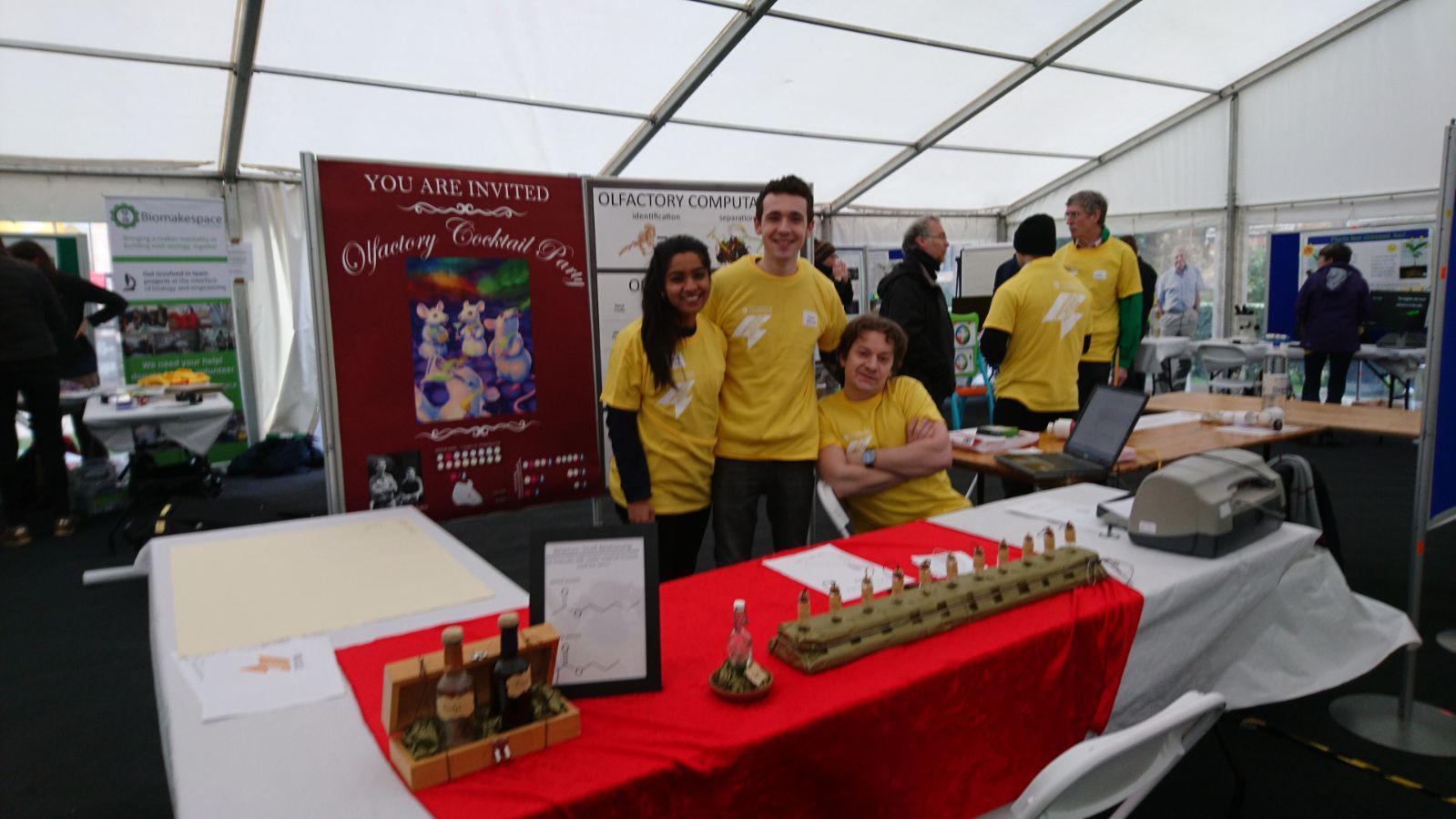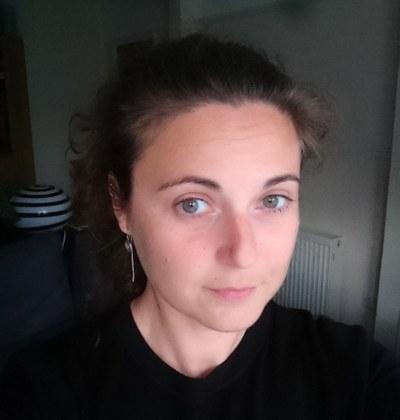Biography
Elisa trained in Italy at the University of Pavia (BSc Biology, MSc Neurobiology) with Egidio D’Angelo as a cellular electrophysiologist, where her first interest has been investigating the cerebellar computation at a cellular and synaptic level. For her graduate studies she then moved to Chris De Zeeuw’s laboratory in Rotterdam, The Netherlands, where she received a complete training in cellular, system and behavioural neuroscience. Thanks to a Sir Henry Wellcome Postdoctoral Fellowship, she then spent four years investigating experience-driven plasticity in bulbar dopaminergic interneurons and the effects of such plastic modifications on the first synapse in olfaction and on olfactory behaviour in Matthew Grubb's lab (King’s College London) and Venki Murthy's lab (Harvard University). In May 2018 she started her lab at the Department of Physiology, Development and Neuroscience at the University of Cambridge, and in October 2020 she joined Fitzwilliam College as Fellow and Director of Studies in Biological Natural Sciences.
Research
Neuronal plasticity

The ability of nerve cells to plastically modify themselves is one of the characteristics that make the brain millions of times more powerful and capable of learning than any supercomputer. I am particularly interested in the ways in which, during both development and adulthood, the brain responds to sensory stimuli and uses such experiences to flexibly modify itself at a cellular level. This process, called neuronal plasticity, is fundamental, as it is thought to be the molecular basis of behaviours such as network development, learning, memory, and sensory processing.
The lab’s main aim is to further study the different types of neuronal plasticity during adulthood and development, how they combine within individual cells at different stages of their lifetime, and how they impact on network processing as a whole. To this end, we take an integrated approach to interrogate olfactory and cerebellar circuits at both the cellular and systems level, with a range of cutting-edge (i.e. optogenetics, chemogenetics and calcium imaging) and well-established technologies (i.e. electrophysiology and morphological techniques).
Dopaminergic heterogeneity
Although dopaminergic (DA) neurons are only a minority of brain cells, their impact on behaviour is substantial. Indeed, they contribute to reward-motivated and motor behaviours, and their impairment has been linked to numerous diseases. Recent studies have highlighted an extreme heterogeneity of morphology, physiology and connectivity among this rather small dopaminergic population, raising the question of whether these neurons have anything else in common besides dopamine itself. To answer this question we plan to take a holistic approach to compare features of dopaminergic populations across different brain areas. Specifically we want to compare the canonical midbrain dopaminergic cells with the relatively understudied group of dopaminergic neurons in the olfactory bulb, some members of which retain the striking ability to regenerate throughout life.

Public engagement, outreach and widening participation
 The lab is highly invested in engaging the public with our research, and strives to ever increase the quality of our outreach activities. Elisa is currently a member of the FENS Glasgow 2020 Host Society Committee, which among other things will organise and coordinate the outreach activities during the meeting.
The lab is highly invested in engaging the public with our research, and strives to ever increase the quality of our outreach activities. Elisa is currently a member of the FENS Glasgow 2020 Host Society Committee, which among other things will organise and coordinate the outreach activities during the meeting.
We are also extremely active in providing mentorship to bright young students from unprivileged backgrounds. Since 2014 Elisa has been a tutor with the charity The Brilliant Club, and has helped hosting students for the in2science program.
Lab members
- Li Huang - PhD student (lh672@cam.ac.uk), co-supervisor Prof Ole Paulsen
- Joe Innes - Undergraduate/Part II student (jsi21@cam.ac.uk)
- Emily Winson-Bushby - Undergraduate/Part II student (edw25@cam.ac.uk), co-supervisor Dr Sue Jones
co-supervisees:
- Emily Sherman - PhD student (es805@cam.ac.uk), main supervisor Dr Emma Cahill
- Katerina Hutton - Undergraduate/Part II student (klh71), main supervisor Dr Sue Jones
Lab alumni
2019/20: Maggy Lau (MPhil), Samuel White (CPGS), Sana Gadiwalla (Visiting Master Student), Joe Hilton (PDN Part II student, NatSci)
2018/19: Tessa Bienfait & Gaia Bianchini (Erasmus+ Master Students); Harry Bestwick, Yasmeen Cooper, Ben Grodzinski (PDN Part II Students, Medics)
Join Us?
- Postdocs
The lab does not have any funded positions at the moment. However, if you are interested in our science and would like to discuss applying for fellowships (e.g., EMBO, HFSP, Sir Henry Wellcome, Branco Weiss, DFG, SNF, Newton International, L’Oréal-UNESCO, EU Marie Curie), email Elisa.
- PhD students
The lab offers PhD projects to students accepted on the MRC Doctoral Training Program (applications in the autumn), or who secured alternative sources of funding, for instance via the Cambridge Trust. Please be mindful of elegibility criteria (e.g., academic, residency) and timelines.
- MPhil Students
MPhil students are encouraged to apply to the taught programs administered from PDN (Basic and Translational Neuroscience, Developmental Biology), and choose our lab for their research projects (no need to contact Elisa before being accepted into the programs). Alternatively, they can join the lab for a year-long research-only MPhil, and in this case you will need to email Elisa well in advance.
We are also happy to consider visiting students wishing to do their final research project in the lab (Erasmus scheme – like).
ALL APPLICANTS: If you are serious about wanting to join us, send Elisa (eg542@cam.ac.uk) your CV and a cover letter detailing what you want to work on and why our lab would be an ideal fit. Blanket applications, especially the ones starting with “Dear Sir”, will not be answered.
Given our commitment to widening access, we do not accept unpaid volunteers.
Collaborators
Susan Jones (PDN) – dopaminergic heterogeneity
Steve Edgley (PDN) – cerebellar learning
Emma Cahill (PDN) – olfactory learning
Tim O'Leary (Engineering) - homeostatic plasticity
Publications
Galliano E, Hahn C, Browne L, Rodriguez Villamayor P , Tufo C, Crespo A and Grubb MS. (2021) Brief sensory deprivation triggers cell type-specific structural and functional plasticity in olfactory bulb neurons. Journal of Neuroscience doi.org/10.1523/JNEUROSCI.1606-20.202. Shared corresponding author.
Galliano E, Franzoni E, Breton M, Chand AN, Byrne DJ, Murthy VN, Grubb MS. (2018) Embryonic and postnatal neurogenesis produce functionally distinct subclasses of dopaminergic neuron. eLife, 7:e32373 doi: 10.7554/eLife.323. Shared corresponding author.
Galliano E, Schonewille M, Peter S, Rutteman M, Houtman S, Jaarsma D, Hoebeek FE, De Zeeuw CI (2018) Impact of NMDA Receptor Overexpression on Cerebellar Purkinje Cell Activity and Motor Learning. eNeuro, ENEURO.0270-17.2018; Shared corresponding author.
Chand AN, Galliano E, Chesters RA, Grubb MS (2015) A distinct subtype of dopaminergic interneuron displays inverted structural plasticity at the axon initial segment. J Neuroscience, 35(4):1573-90.
Galliano E, De Zeeuw CI. (2014) Questioning the cerebellar doctrine. In Progress in Brain Research, Cerebellar Learning Volume, 210:59-77. Book chapter.
Galliano E, Gao Z, Schonewille M, Todorov B, Simons E, Pop A, D'Angelo E, van den Maagdenberg AM, Hoebeek F, De Zeeuw CI. (2013) Silencing the majority of cerebellar granule cells uncovers their essential role in motor learning and consolidation. Cell Reports, Apr 25;3(4):1239-51
Galliano E, Potters JW, Elgersma Y, Wisden W, Kushner SA, De Zeeuw CI, Hoebeek FE (2013) Synaptic transmission and plasticity at inputs to murine cerebellar Purkinje cells are largely dispensable for standard non-motor tasks. J Neuroscience, Jul 31;33(31):12599-618.
Teaching and Supervisions
PDN Part II – Module N4 – Olfactory physiology
PDN Part II – Module N9 - Plasticity in sensory and motor systems
PDN MVST Part IB - Neuroanatomy
PDN NST Part IB - Brain histology
Part IA - Physiology of Organisms - Sensing the Environment
MPhil in Basic and Translational Neuroscience - Course Tutor


